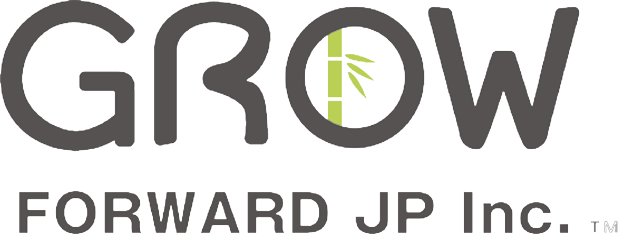In a world where everything is virtually online, how can businesses differentiate themselves from their competitors?

The salesperson is the primary differentiator in purchases today. As products and services become increasingly commoditized, buyers are aware they can get similar offerings from other companies.
They cannot, however, obtain the sales experience created by the sales representative from any company.
This means that salespeople have almost complete control over their own destiny. Instead of blaming poor sales results on a bad month, a hard-to-sell product, or being forced to work remotely, sales reps might also consider analyzing their processes and thinking up ways to make them more buyer-friendly.
Regardless of your industry or the types of organizations you sell to, here are a few good tips to help you sell more to just about anyone.
1. Make it all about them
Do you know someone who monopolizes every conversation? They’re probably not your favorite person to talk to.
Buyers dislike listening to salespeople talk at length about their companies or offerings in the same way that you dislike listening to someone who monopolizes the conversation. Prospects see what you see as informative and interesting as obnoxious and irrelevant.
The cardinal rule of sales is to always make it about the buyer. Every email you send, voicemail you leave, demo you give, and meeting you attend should have the buyer at the forefront of your mind. Constantly ask yourself, “What’s the relevance to this particular prospect?” and customize each interaction accordingly.

But how do you know what’s relevant?

2. Do your research
If you want buyers to give you their time and learn about your product, you must first learn about them. There’s no reason to call or email a buyer without knowing what they do or what they care about in the age of social media.
Consumer research doesn’t have to be time-consuming. Depending on your particular sales cycle, as little as five or ten minutes per prospect may be sufficient.

3. Build rapport
If a customer walks into your store, you wouldn’t immediately say, “Hello, would you like to buy this?” You’d likely start with a greeting and then ask, “What brings you in today?” You could say things like, “I really like that top you’re wearing.” You might then ask, “So, you’re looking for a dress. May I ask what the occasion is?”
Similarly, if you plan to contact a prospect you haven’t spoken with before, it’s important to research first.
Get to know your prospect before you start talking about what you have to offer, why they should care, and why you’re better than your competitors.
After all, we’re just human beings. Talk to your prospect like a Human first before speaking to them like a salesperson.

4. Define your ideal buyer
No matter what business you’re in, you’ll have far more success if you’re familiar with the characteristics of your target buyers and thoroughly qualify each prospect against that matrix. This is referred to as an ideal buyer profile, and it is equivalent to having a secret weapon.
You’ll save time by identifying the specific type of “anyone” who is ideal for your product or service. Instead, you’ll have more time to devote to buyers who have a good chance of becoming customers.
5. Contribute first, sell second.
If you define your target buyer correctly, you’ll spend the majority of your day talking to business leaders who have problems that your product or service can solve. But just because you know something doesn’t mean they do.
Don’t make your pitch right away. You risk enraging or scaring away the prospect. Instead, offer your help in the way you think would be most valuable. Not sure how you can help? Ask.
Position yourself as an advisor who wants to help, rather than a salesperson desperate to sell. When you finally get around to connecting their problem with your offering, you’ll find a more receptive audience with this approach. In summary, be helpful at all times.


6. Ask questions, and listen.
No matter how thoroughly you’ve researched your prospect, there will be gaps in your knowledge, and you won’t be able to help the buyer solve their problem if you don’t fully understand it. As a result, it’s critical to ask thoughtful questions — and a lot of them — during your conversations.
It’s a good idea to prepare a list of questions beforehand, but you don’t have to stick to them if the conversation takes an unexpected turn. People enjoy talking about themselves and their situations, so your genuine interest and curiosity will help them warm up to you.
After posing a question, remain silent and simply listen. Listen carefully to what the buyer is saying and don’t just wait your turn to speak. Then, after they’ve finished their thought, communicate their message back to them, ask them to verify that you understood them correctly, and ask a clarifying question.
Not only does careful listening help you get a grip on the problem, but it also makes the prospect feel good. And if you really pay attention, they’ll be more likely to reciprocate when you have something to say.

7. Approach them on their level.
It’s great when a salesperson brings their unique personality to the selling process, but bear in mind you should also consider your prospect’s personality and tailor your approach accordingly. Our personal attributes have an impact on how we like to be sold to and what information we prioritize.
Be mindful of your prospect’s preferences and customize your messaging and focus on what is most important to them.
8. Remember, you’re selling to a person.
When you’re sending countless outreach emails each and every day, it’s easy to forget that leads are people. But they are, and they want to be treated as such.

Put yourself in their shoes: would you like to receive this email? Would you appreciate this voicemail? If you don’t, chances are your buyer won’t either.
In conclusion:
It’s important to be professional in sales, but it’s also important to be personable. Buyers have lives outside of work and they have interests that are unrelated to their jobs. Build genuine rapport with your prospects by letting the conversation drift into the person every once in a while. It doesn’t have to be — and shouldn’t be — all business all the time.
